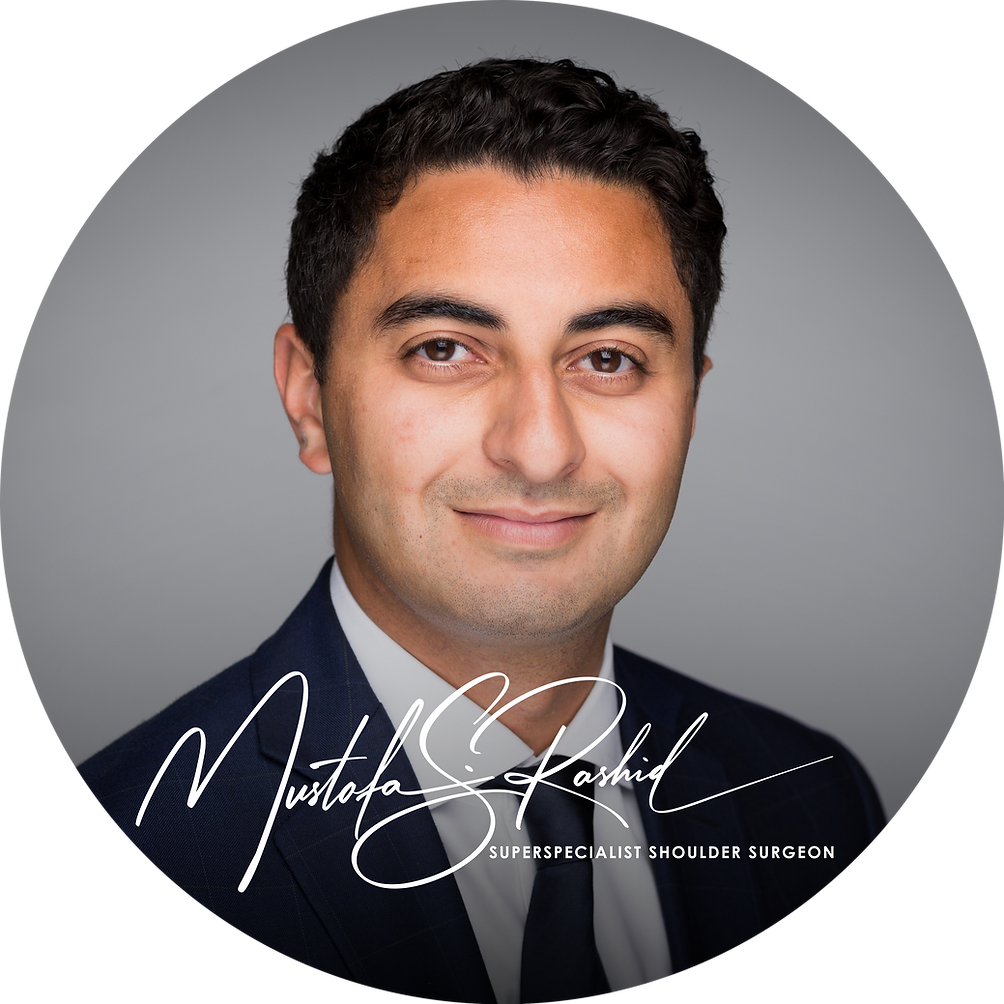Rotator Cuff Repair Surgery

Overview
Dr. Rashid performs rotator cuff repair surgery using arthroscopic (keyhole) surgery techniques. It is a safe and effective procedure aimed at repairing the torn tendon(s) to the ball of the shoulder. This procedure can take between 1 and 2 hours, and is often successful at relieving pain, improving movement of the shoulder, and regaining strength with activities. It is performed under general anaesthesia, often with a nerve block (regional anaesthesia) as an adjunct to provide pain relief in the post-surgery period.
Indications for Surgery
Most people who opt to have rotator cuff repair surgery have pain and/or weakness in their shoulder movements that prevent them from performing daily activities or sports. The pain, and degree of limitation should be significant to ensure the potential benefits of surgery are achieved. Partial tears are often more painful than complete tears. Larger tears may have more noticeable weakness than smaller tears. Sleep disturbance due to rotator cuff pain is often a feature of patients choosing to have surgery.
Pre-Surgery Tests and Assessment
Before any rotator cuff repair surgery, a variety of assessments and tests, such as X-rays, and a MRI scan are performed to assess the size of the tear, which tendons are involved, how far the tendons have moved away from their attachment, and the quality of the muscles in the shoulder.
Procedure Details
A specialist can often diagnose a rotator cuff tear by asking you questions and examining your shoulder. X-rays are helpful for ruling out other causes of pain, such as arthritis. Under general anaesthesia, we will place you on your side, with your arm held with a special arm holder. After sterilising the skin with cleaning solution, a keyhole camera is inserted into the shoulder. After confirming the extent of the tear, Dr. Rashid will then repair the tendons using suture anchors. These are devices inserted into the bone with ultrastrong sutures embedded in them. These sutures are passed through the tendon edge and tied down. Anywhere from 1 to 8 suture anchors may be required, depending on the type and size of cuff you may have. Where possible, Dr. Rashid prefers to repair the tendon back to the bone, exactly where it detached from. Occasionally, the tears are so large, they may require a graft, to either reinforce the repair, stimulate healing of poor quality tendon tissue, or even replace lost tendon. Adjunctive procedures such as those addressing a degenerative or dislocated long head of biceps tendon may also need to be performed to ensure complete pain relief. The portal sites are closed with stitches that are absorbable and buried under the skin. Dressings and a sling are then applied.
Risks and Complications
The risks of rotator cuff repair surgery are not common. These include stiffness (most common risk), recurrent tears, infection, and nerve injury (very rare).
Recovery and Rehabilitation
Compliance to quality physiotherapy is essential for a good outcome. Dr. Rashid will work with your physiotherapist to outline a protocol for rehab. This will be based in phases and designed to allow you full return to all activities. There are no shortcuts however, and it is crucial to not stress the repair too quickly to prevent failure. It is important to appreciate that surgery is one day of your life, whilst rehabilitation, may be up to one year of your life.
Expected Outcomes
The vast majority of people having this surgery are satisfied with the outcome. Pain relief, return to better quality sleep, and improved movement are the norm after this surgery. Regaining strength, particularly overhead, and full return to sports is also very likely, but may take over 6 months.
About the Author

Mustafa Rashid
Dr. Mustafa Rashid is an award-winning, well published superspecialised surgeon from the UK, specialising in shoulders
